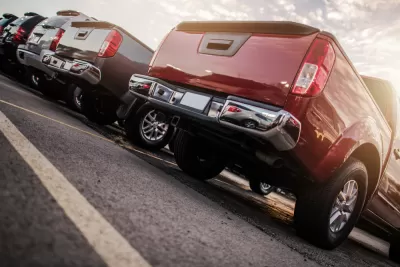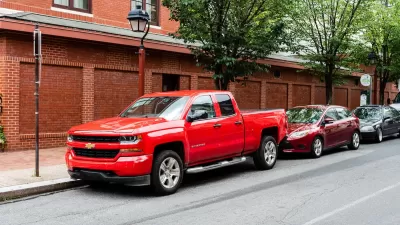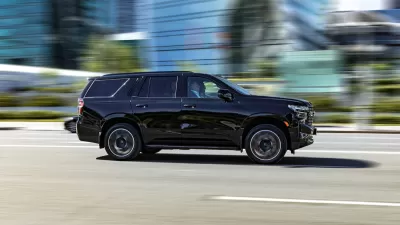Ever wonder where the supersizing of cars is going to end? Kaid Benfield dives deep into the subject and suggests five actions we can take to get to a safer spot in the road.

“I’ve become obsessed with the size of personal vehicles, and I’m pretty sure it’s driving my wife crazy. Every time we take a walk, run an errand, or find ourselves in a parking facility, I can’t help myself from commenting constantly about the enormous size of many newer cars, trucks, and especially SUVs compared to any older ones nearby. I worry that my obsession is getting annoying, so bear with me while I dive into the subject in some detail in an attempt to purge it from my system,” Kaid Benfield says. He provides a lengthy description of why this is, and wraps up with five actions we can take to make a difference:
- Close SUV Loopholes and regulate all everyday vehicles the same under CAFE and other government programs.
- Clarify that the mission of the Highway Traffic Safety Administration and National Transportation Safety Board includes protecting pedestrians and others outside of vehicles from dangerous vehicle design.
- Tax vehicles on size and weight, not just price. The Los Angeles Times editorial board is among many observers endorsing this measure, citing with approval weight-based taxes (generally assessed when the vehicles are registered each year) in Washington, DC, New York, Florida, and Virginia.
- Create incentives to improve the design of large vehicles to allow greater front- and rear-end visibility.
- Reduce the demand for heavy EV batteries. As noted, we need EVs and the pollution-reducing benefits that they provide. But given the downsides, we should be creating incentives to design, manufacture, sell and purchase ones that don’t require such additional weight and natural resource consumption.
FULL STORY: CARZILLA: Are huge SUVs & trucks hurting pedestrians and walkable communities?

Maui's Vacation Rental Debate Turns Ugly
Verbal attacks, misinformation campaigns and fistfights plague a high-stakes debate to convert thousands of vacation rentals into long-term housing.

Planetizen Federal Action Tracker
A weekly monitor of how Trump’s orders and actions are impacting planners and planning in America.

Chicago’s Ghost Rails
Just beneath the surface of the modern city lie the remnants of its expansive early 20th-century streetcar system.

Bend, Oregon Zoning Reforms Prioritize Small-Scale Housing
The city altered its zoning code to allow multi-family housing and eliminated parking mandates citywide.

Amtrak Cutting Jobs, Funding to High-Speed Rail
The agency plans to cut 10 percent of its workforce and has confirmed it will not fund new high-speed rail projects.

LA Denies Basic Services to Unhoused Residents
The city has repeatedly failed to respond to requests for trash pickup at encampment sites, and eliminated a program that provided mobile showers and toilets.
Urban Design for Planners 1: Software Tools
This six-course series explores essential urban design concepts using open source software and equips planners with the tools they need to participate fully in the urban design process.
Planning for Universal Design
Learn the tools for implementing Universal Design in planning regulations.
planning NEXT
Appalachian Highlands Housing Partners
Mpact (founded as Rail~Volution)
City of Camden Redevelopment Agency
City of Astoria
City of Portland
City of Laramie





























